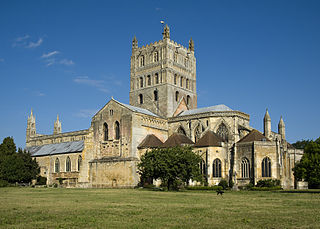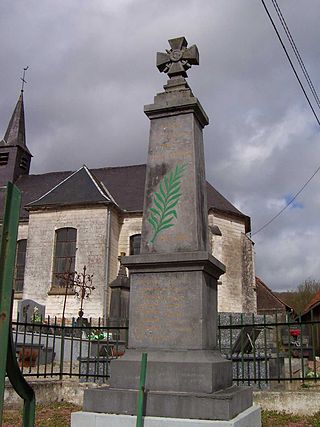
Dallam was the surname of a family of English organ builders, active in England and Brittany. The first known member of the family, Thomas Dallam, originated from Dallam in Lancashire.

Dallam was the surname of a family of English organ builders, active in England and Brittany. The first known member of the family, Thomas Dallam, originated from Dallam in Lancashire.
The first Thomas Dallam (1575; after 1620) left Lancashire, to establish himself in London where he became a member of the Blacksmiths' Company. During 1599 and 1600 he went on a voyage from London to Constantinople in order to deliver an organ to the sultan Mehmet III. [2]
After his return to England Thomas Dallam married and built many important organs, including that of King's College Chapel, Cambridge.
Thomas Dallam's son Robert Dallam (born ca. 1602) became an important organ builder. The first organ he made after his father's death may be the Milton Organ of Tewkesbury Abbey. [1]
He and his family relocated to Brittany during the English Commonwealth, when it was impossible to pursue a career as an organ builder in England. In 1660, following the restoration of the monarchy, Robert Dallam and other members of the family returned to England. Robert and his sons Ralph and George built an organ for St George's Chapel, Windsor Castle, which had been damaged during the civil war. [3] Robert died while competing his organ at New College, Oxford.

Robert's eldest son was called Thomas and was born around 1630. As a child, he moved to France with his family. Although his father returned to England in 1660, Thomas remained in France building organs, several of which have been preserved in more or less their original condition. His children included Toussaint Dallam who was an organ builder.

The Abbey Church of St Mary the Virgin, Tewkesbury, commonly known as Tewkesbury Abbey, is located in the town of Tewkesbury in the ceremonial county of Gloucestershire, England. A former Benedictine monastery, it is now a parish church. Considered one of the finest examples of Norman architecture in Britain, it has the largest Romanesque crossing tower in Europe.
Renatus Harris was an English master organ maker in England in the late seventeenth and early eighteenth centuries.

Altorf is a commune in the Bas-Rhin department in the Grand Est region of northeastern France.

Saint-Brieuc Cathedral is a Roman Catholic church located in the town of Saint-Brieuc, Brittany, France, and dedicated to Saint Stephen.

Ploujean is a former commune of Finistère which is part of Morlaix since February 22, 1959.
Ergué-Gabéric is a commune in the Finistère department of Brittany in north-western France. It lies on the Odet river. The businessman and publisher Gwenn-Aël Bolloré was born in the commune.

Dol-de-Bretagne Cathedral is a Roman Catholic church located in Dol-de-Bretagne. The cathedral is dedicated to Saint Samson, one of the founding saints of Brittany. It was formerly the seat of the Archbishop of Dol, one of the nine ancient bishoprics of Brittany. The cathedral suffered badly from the excesses of the French Revolution, becoming successively a "Temple de la Raison", then a stable, then a warehouse. Revolutionaries caused considerable damage and many treasures were lost. When it eventually returned to being a house of worship, its role as a bishopric was abolished by the Concordat of 1801 when the Dol diocese was merged into the Dioceses of Rennes and Saint-Malo. The Concordat of 1801 was an agreement between Napoleon and Pope Pius VII, signed on 15 July 1801 in Paris, which sought national reconciliation between revolutionaries and Catholics. The Concordat was abrogated by the law of 1905 on the separation of church and state.

Tréguier Cathedral is a Roman Catholic church and former cathedral in Tréguier, Côtes-d'Armor, France. It is dedicated to Saint Tudwal. The church was formerly the seat of the Bishopric of Tréguier, abolished under the Concordat of 1801, when its territories were divided between the Diocese of Quimper and the Diocese of Saint-Brieuc, known since 1852 as Saint-Brieuc-Tréguier.

Guisy is a commune in the Pas-de-Calais département in the Hauts-de-France region of France.

Saint Paul Aurelian Cathedral was a Roman Catholic cathedral, now basilica, in Saint-Pol-de-Léon, in the Finistère department in Brittany in north-western France. The 13th-century church stands on the site of the original church founded by Saint Paul Aurélien in the 6th century. It is a listed monument since 1840.

Plumelec is a commune in the Morbihan department of the Brittany region, in north-western France.

Lanvellec is a commune in the Côtes-d'Armor department of Brittany in north-western France.

Saint-Chef is a commune in the Isère department in southeastern France.
Saint Gwenhael was a Breton saint of the 6th century, born at Ergué-Gabéric (Finistère), the second abbot of Landévennec Abbey, successor in 532 to the founder, Saint Winwaloe (Gwenole). According to tradition, Winwaloe met Gwenaël in a street in Quimper when he was eleven, and was so convinced of his gifts that he at once obtained permission from Gwenaël's parents for him to study under his direction. The feast of Saint Gwenaël is 3 November. His Vita was written in the 9th century.

St. Peter and St. Paul's Church of Wissembourg is frequently, but incorrectly, referred to as the second largest Gothic church of Alsace after Strasbourg Cathedral. However, the building, with its interior ground surface area of 1,320 square metres (14,200 sq ft) most probably is the second largest Gothic church in Bas-Rhin which is one of the two departments of the Alsace region.

The Notre-Dame du Kreisker chapel is a Roman Catholic chapel in Saint-Pol-de-Léon in Brittany, France. The 78-metre (256 ft) tower of the "Chapelle du Kreisker" is the highest in Brittany. The word Kreisker means the downtown.
Thomas Dallam was an English organ-builder. Dallam served an apprenticeship and became a member of London's Blacksmiths' Company. He travelled frequently to build organs on site, going as far as Turkey.

The Church of Old Saint Peters is a by simultaneum Catholic and Lutheran church building in Strasbourg, Alsace is first mentioned in 1130.

Sainte-Croix de Quimperlé Abbey is a former Benedictine abbey located in the town of Quimperlé, in the French department of Finistère, within the Brittany region.

The Basilica of Saint-Sauveur de Dinan is a Roman Catholic church situated in Dinan, France. Historically, it is one of the two parish churches in the town, the other being Saint-Malo.